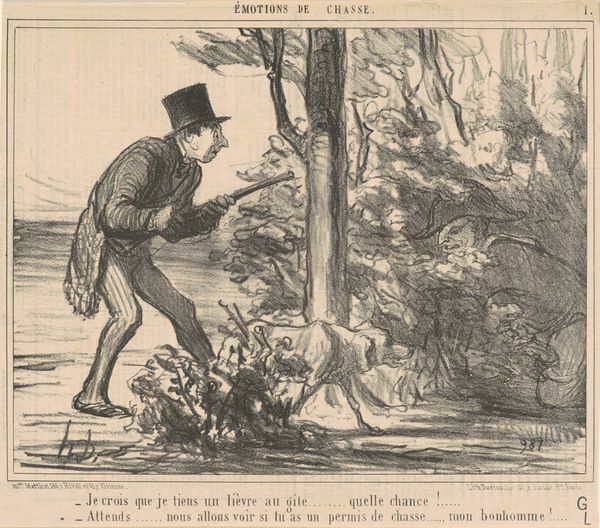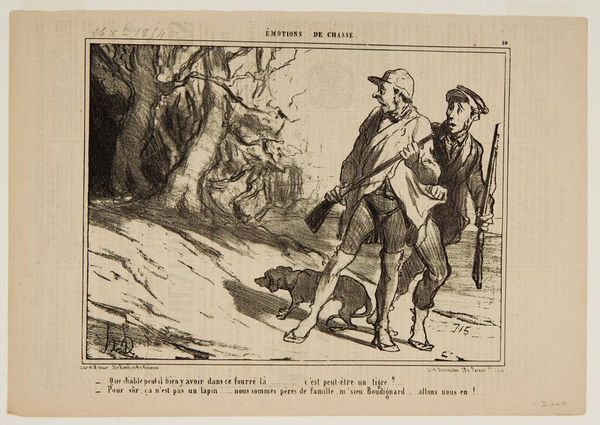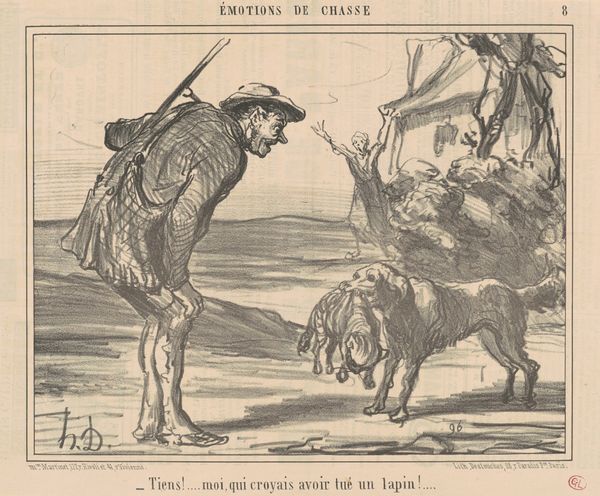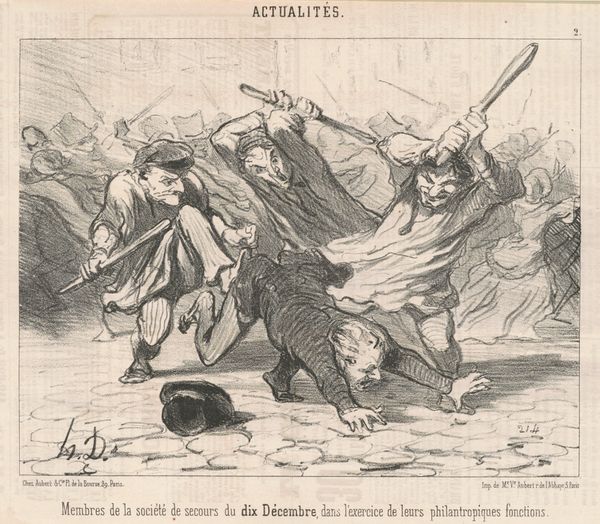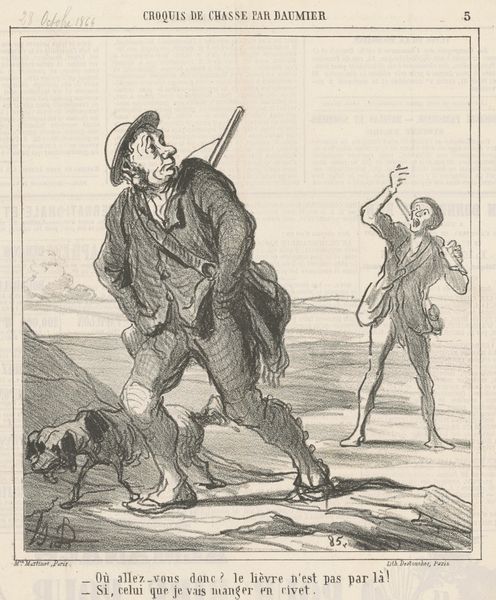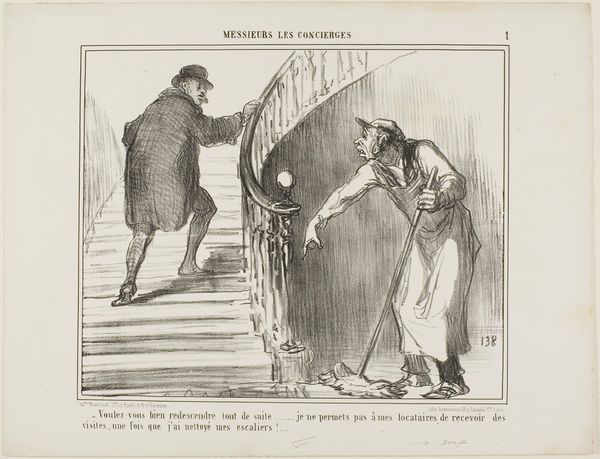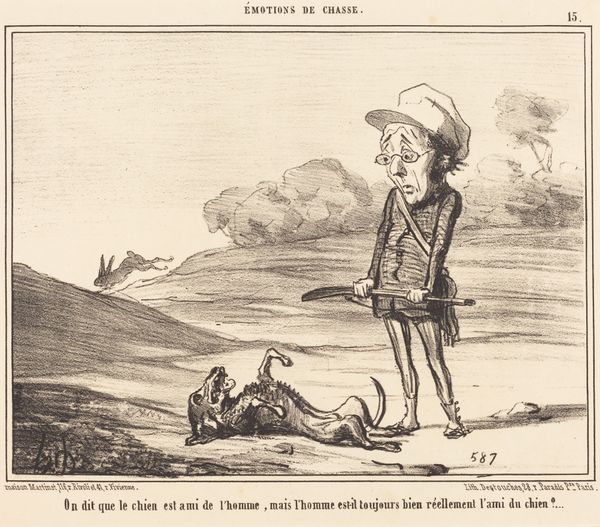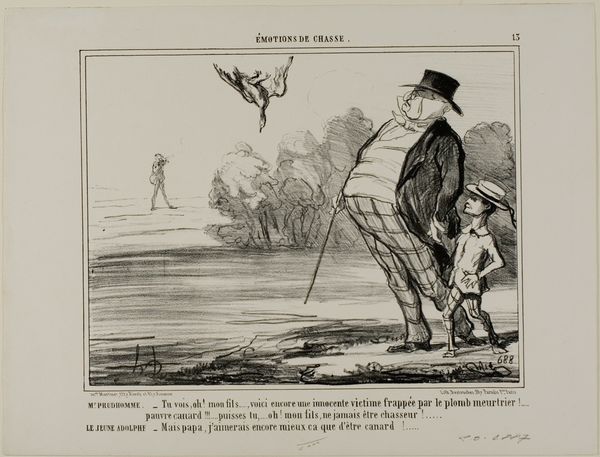
lithograph, print
#
lithograph
# print
#
french
#
caricature
#
romanticism
#
genre-painting
Copyright: National Gallery of Art: CC0 1.0
Editor: This is "Le docteur Véron lachant tous les canards..." by Honoré Daumier, a lithograph print from around the 19th century. It feels chaotic, with a man releasing ducks toward what seem to be angry dogs. What do you see in this piece, from a formalist perspective? Curator: The eye is immediately drawn to the diagonal composition, bisecting the image and amplifying the sense of frantic energy. Daumier’s strategic use of hatching and cross-hatching delineates form, particularly evident in the dramatic rendering of the dogs. Notice how their sinuous bodies, rendered with a darker, heavier line weight, contrast with the smoother, lighter treatment of Dr. Véron. Editor: Yes, the contrasting textures create a sort of visual hierarchy. Are you saying that the dogs are the main focus? Curator: Not necessarily the focus, but strategically highlighted through contrast and compositional placement. Observe how the repetition of line and form in the ducks mirrors and enhances the overall freneticism. Even Dr. Véron's stance is constructed using lines to give shape and dimension. Ultimately, it is the relationships between line, tone and implied motion that truly build the aesthetic tension. Editor: So, even without knowing the political context, we can still understand a lot about the print just by looking at the relationships between its visual elements? Curator: Precisely. By focusing on the internal structure and interplay of formal elements, one can decipher the inherent drama, regardless of its historical allusions. Editor: I’ve definitely learned a lot about how the elements of art create movement. Thanks for this focused view! Curator: Indeed, a close study of form can illuminate the dynamics within any artwork.
Comments
No comments
Be the first to comment and join the conversation on the ultimate creative platform.


